A statistics analysis from the Open Mainframe Project demonstrates the impact of Zowe in the mainframe open source community
It was just a year ago that the Open Mainframe Project announced the first open source project on z/OS, Zowe. Zowe was started with the intent of bringing industry experts together to drive innovation for the community of next-generation mainframe developers. To accomplish this vision the open source mainframe community built a framework of software services that allows development and operation teams to securely manage, control, script and develop on the mainframe using modern tools and interfaces – just like any other cloud platform today.
To date, we have witnessed the growing excitement and energy the Zowe project has brought to the global Z community. Since the creation of Zowe, we have even seen new open source projects on Z emerge. Ed Jaffe, Chief Technology Officer for Phoenix Software International, and new Open Mainframe Project member organization said in their press release that:
“We have observed, throughout our 40 years in business, that approximately every decade or so a transformative technology comes along that greatly enhances the usability of our platform. We believe Zowe is this decade’s transformative technology and it would be a mistake to not embrace it.” And Phoenix Software aren’t the only ones taking notice as evident from the following OMP Report on Zowe.org community metrics.
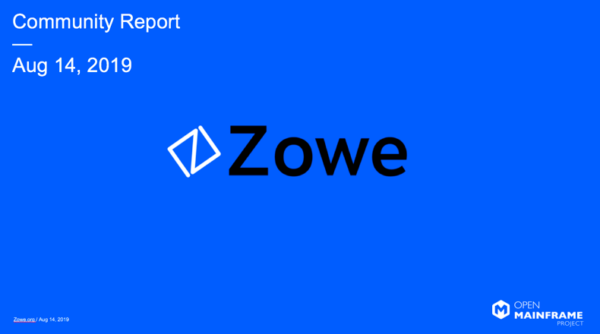
Each month the Open Mainframe Project Zowe generates a “Community Report” that list metrics collected from their website zowe.org, the Giza download server, slack workspace and github metrics visualized and interpreted using Grimoire Labs. Based on the insights derived from this report the community can adjust its operations to better serve the needs of the community. They can also use this data to measure growth of the project and adoption of the technology they produce.
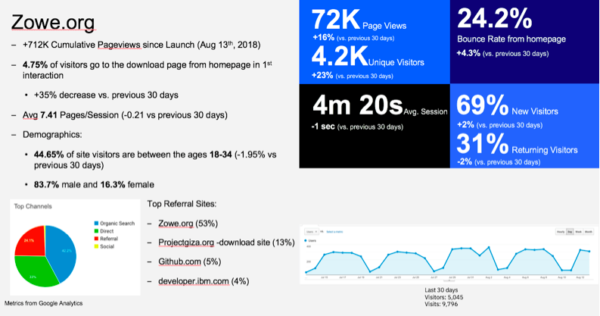
In Zowe’s first year, their website witnessed more than +700K cumulative page views with an average of 7.41 pages/session. On top of that very strong showing, the average session duration was 4 minutes and 20 seconds – compelling metrics that indicate the content is reaching an interested audience.

From the get-go, the community had its sights on global reach. It’s Zowe App Framework and Web-UI even supports translations for multiple languages. Although the majority of visitors to Zowe.org are from the US, the community has held several events across the world including some typical z/OS conference as well as Linux Foundation open source events in order to reach a broad audience.
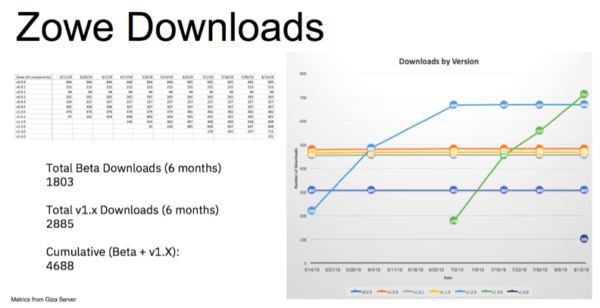
With approximately 4.75% of Zowe.org visitors going to the download page in their first interaction from the homepage, the community has experienced a large number of downloads from Zowe.org. In the first 6 months of the project, Zowe was pulling together code from different vendors and was releasing beta versions. They then launched their v1.0.0 release in February 2019 which indicated GA quality code. At that time, they saw a promising spike of over 30% increase in downloads and have sustained that growth across all their proceeding monthly releases. All together, they have witnessed more than 4,600 downloads in their first year.

And with more than ~326 active weekly users in the Open Mainframe Project Slack workspace, this developer community continues to grow by ~50 new user’s month over month. With a mix of both z/OS experts and newbies, this is not only a destination to learn all about the Zowe technology, but is also an amazing hub for knowledge transfer and innovation.
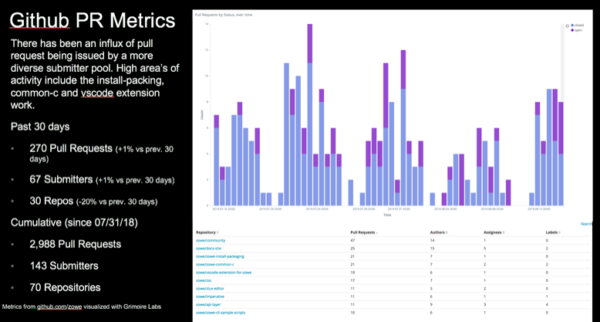
Now when it comes to open source projects, code is king/queen. Zowe truly has vibrant development activity with an average of ~270 pull request being issued each month. Another good indicator of community health is to compare the ratio of contributors vs committers. Today, the community has received contributions from over 140 contributors (submitters) while sporting about 70 committers.
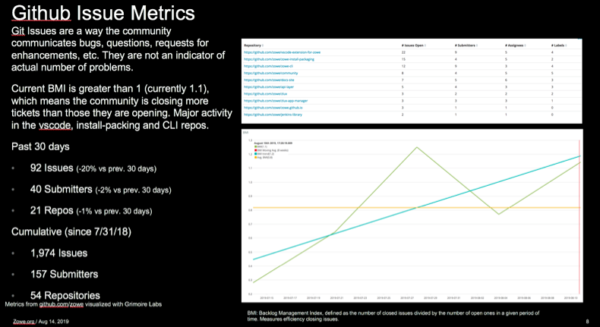
Another interesting open source community metric to look at is git issues. A high number of git issues does not necessarily mean there are problems with the code. It is common for git issues to be submitted for bug tracking, asking clarifying questions and even used for requests for enhancements. The Zowe community even uses git issues to track new sub-project proposals (i.e. IMS Operations API). One thing to notice is that Zowe, in its last report, had a positive Backlog Management Index… which measures the number of issue’s opened vs closed in a given period of time. With a current BMI of 1.1 the community is showing its ability to close issues at a faster rate than they are being generated, meaning they are making progress working down the backlog.
Another key enabler to this movement was just announced – the Zowe Conformance Program. The conformance program provides a set of guidelines and test criteria that defines how commercial and free applications can be built on the framework and helps ensure that conformant apps, plug-ins or APIs will behave as expected. With 10+ commercial products across a variety of vendors already participating in the conformance program, we are witnessing the growth and creation of an ecosystem of modern tools using the Zowe open source framework.